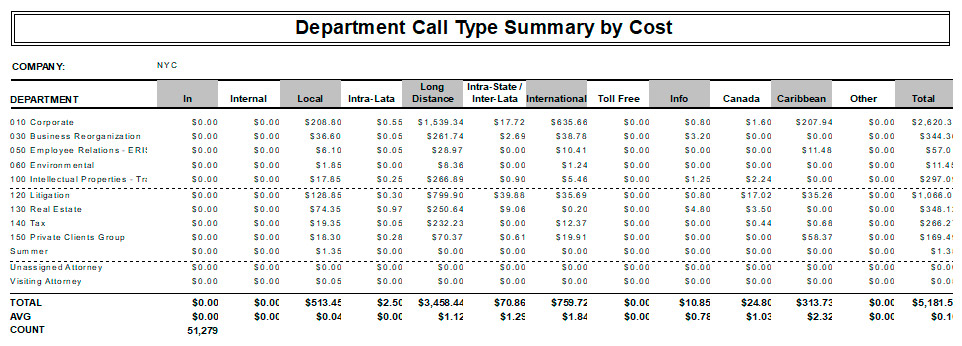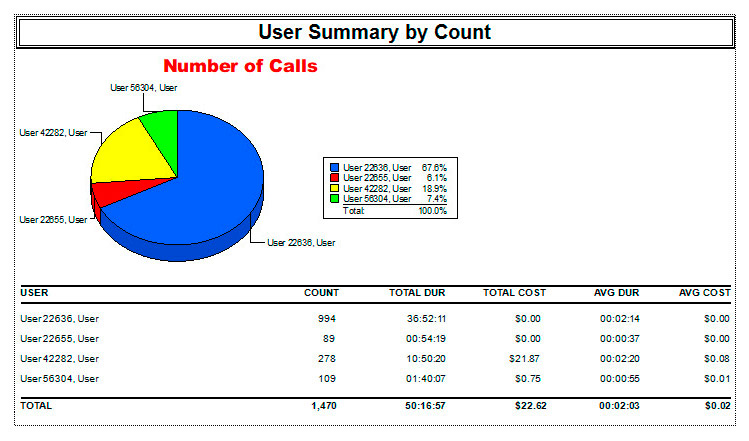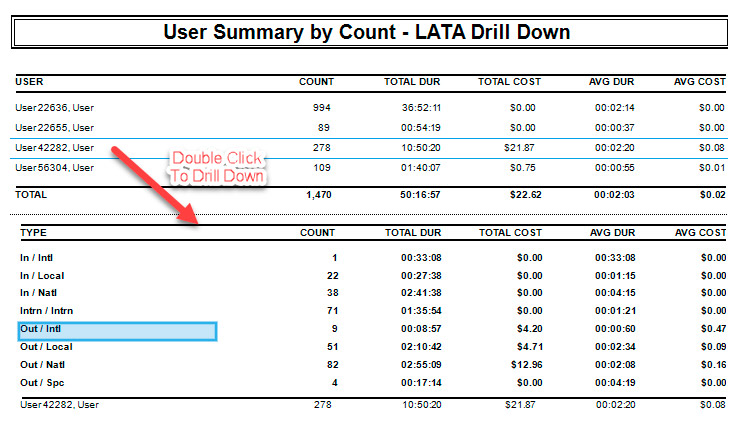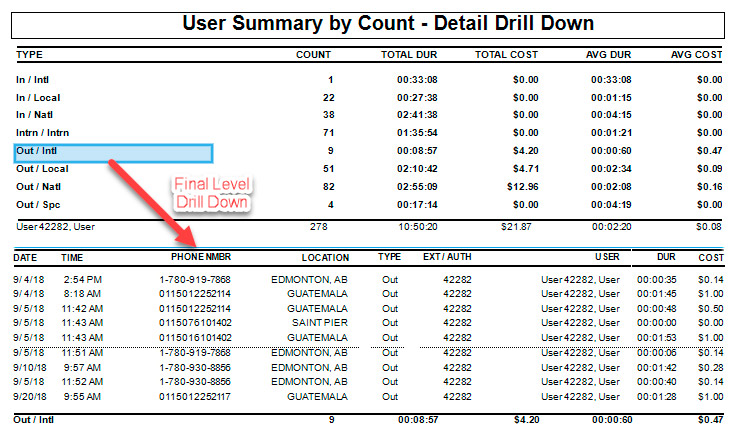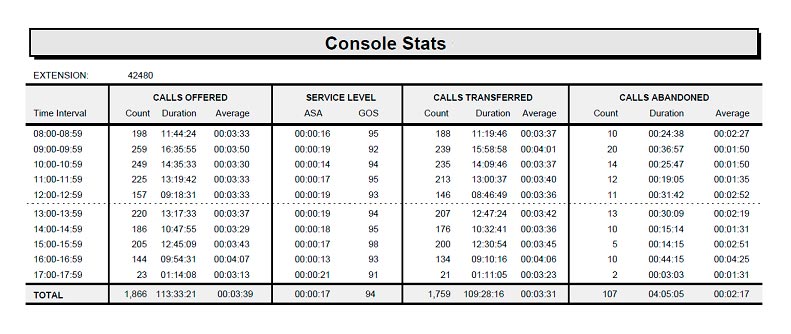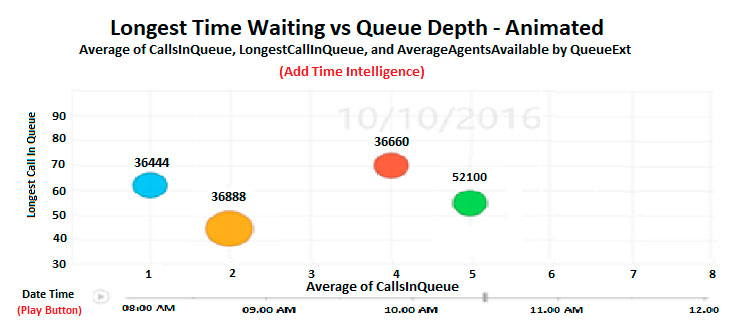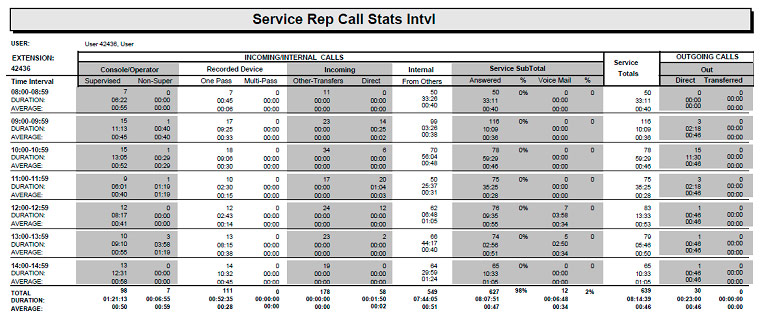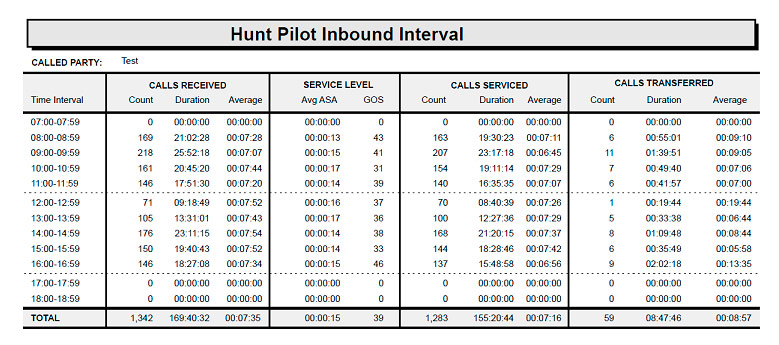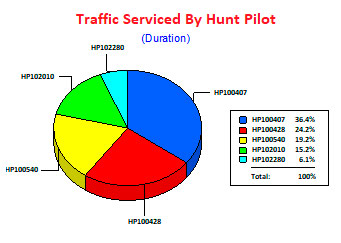Cisco CDR Tracking
ApogeeNet makes every call count! As simple as that sounds, totally Cisco UCM calls properly, it is crucial to obtain a complete picture of the complicated paths a call can take from the initial connection to final resolution of the call. An accurate reporting system must be constructed on a foundation secured with a thorough cradle-to-grave analysis of each call. With a proven track-record at numerous Fortune 500 customers, ApogeeNet is unsurpassed at processing complex calls more accurately than comparable systems.
Using robust building blocks and proprietary Call Progress Analysis, ApogeeNet tracks the various segments of a call through different devices and departments to provide over 175 customizable detail and summary report templates, including a variety of distinctive Call Cluster Management Reports to access incoming call activity. For each UCM call leg, over 100 parameters are derived from the CDR record for utilization and visualization using innovative ApogeeNet business intelligence tools.

Detailed Report Drill Down – Quick Access to Data
ApogeeNet utilizes the SAP Crystal Report framework to create pixel-perfect management reports. Explore high-level summary reports and drill down to the most meticulous details with standard report templates or delve into the exciting world of business intelligence and slice-and-dice the multitude of Cisco parameters for your custom purposes.

SIP Analysis – Determine Proper Cisco UCM Capacity
SIP trunking is a voice over IP technology designed to deliver telephone services and unified communications to customers requiring voice, video, and other streaming media applications. SIP facilities can be customized to deliver the required bandwidth necessary for these various applications. In terms of traditional voice technology, the primary metric required to configure SIP facilities for the proper bandwidth involves a determination of the peak concurrent voice-equivalent circuits. ApogeeNet reports can be utilized to analyze the peak number of circuits utilized by traditional trunking for conversion analysis or ongoing analysis of implemented SIP circuits.

Keep your Cisco UCM Running Smoothly
As new exchanges are constantly being added to the target location, the Gateway programming requires periodic updating. More importantly, calls to the target location may not be routed due to a lack of capacity on the inexpensive circuits that cause overflow to the expensive circuits. ApogeeNet reports can be utilized to analyze these situations by creating specific report templates and having them automatically generated for analysis.

Tail-End-Hop-Off Analysis – Save Costs
Organizations often employ dedicated circuits between various geographically separated locations and international end points. The Gateways to these circuits are programmed to route expensive long distance calls over the dedicated trunk circuits to the end point where they are routed as local calls, thereby realizing cost savings. If your organization is considering TEHO analysis or continuing to monitor implemented TEHO solutions in an ever-changing environment, ApogeeNet can provide useful tools to:
- Aggregate statistics from multiple separate offices to determine TEHO cost tradeoffs
- Assess traffic requirement at TEHO end points to evaluate costs
- Determine if traffic should be routed to other offices with large TEHO volume

Cradle-To-Grave-Tracking
In modern phone systems, particularly for VoIP processing, it is crucial to get a complete picture of the various paths a call can take from the initial connection to final resolution of the call – in exact detail. Robust identification of various transfers not only requires tracking simple call transactions that take place without issue, but also failure mechanisms where error conditions can alter normal navigation to an intended destination.
Most Cisco call tracking systems use a simple id to track segments of a call. However, there are conditions that cause the UCM to generate different id values for certain segments of the SAME call, causing them to appear on reports as separate calls. ApogeeNet includes sophisticated algorithms to recombine these seemingly unrelated call sequences properly to yield complete, fully resolved, cradle to grave tracking. These advanced ApogeeNet features are particularly useful in environments required accurate tracking of conference calls, supervised transfers, and complex overflow routing between multiple sites.

Call Cluster Configurations
Every organization has groups of employees who represent the face of the business to the outside world. These groups operate on a smaller scale than full-blown call centers, but have many of the same characteristics and reporting requirements. Inbound callers should be routed to these groups quickly, serviced by knowledgeable representatives, obtain first-call resolution and have their needs addressed without unnecessary delay, repetitive transfers, or call-backs. To achieve these objectives, it is important to monitor call handling metrics for these receptionists, console operators, hunt group representatives, and agents in small or native queues. ApogeeNet has a large collection of reporting tools to address the demands of these Call Clusters.

Optimize Voice Network
Maintaining any voice network is an endless task. Lack of supervision can cause unexpected reductions in available capacity and performance. ApogeeNet provides the reporting tools necessary for telecom managers to gain insight into their voice network, optimize performance, and improve global operational efficiency. Engineering calculations based on actual usage help manage bandwidth requirements, circuit availability, busy hour blockage, and can be modeled to simulate network performance under alternative conditions.

Native Queue Dashboard
The Apogeeet Native Queuing Dashboard for Cisco UCM monitors the fundamental metrics of traffic into a hunt pilot configured for native queuing in real-time and displays them on the application server monitor and can automatically refresh Power View Charts from multiple queues in a corporate SharePoint portal for on-line viewing. Up to four native queues can be monitored simultaneously from the CDR records of a single Cisco Cluster and up to fifty Clusters in total. In addition, the real-time results are stored in the SQL database for historical examination using many of the reports in the standard Apogee Call Accounting Suite.

Big Data Metrics
ApogeeNet uses advanced cradle-to-grave tracking and unique call progress analysis to calculate over 100 fields for every leg of every call. These powerful metrics provide a foundation for unique visualization of UCM records. A Key Performance Indicator is the penultimate metric derived using the business intelligence model, the mile-high view of daily operations, and is the synthesis of a conglomerate of data streams reduced to a simple visual indication of the critical process being monitored. ApogeeNet stands alone on the forefront of call accounting utilizing BI techniques to visualize important KPIs for a variety of departments in any organization.
